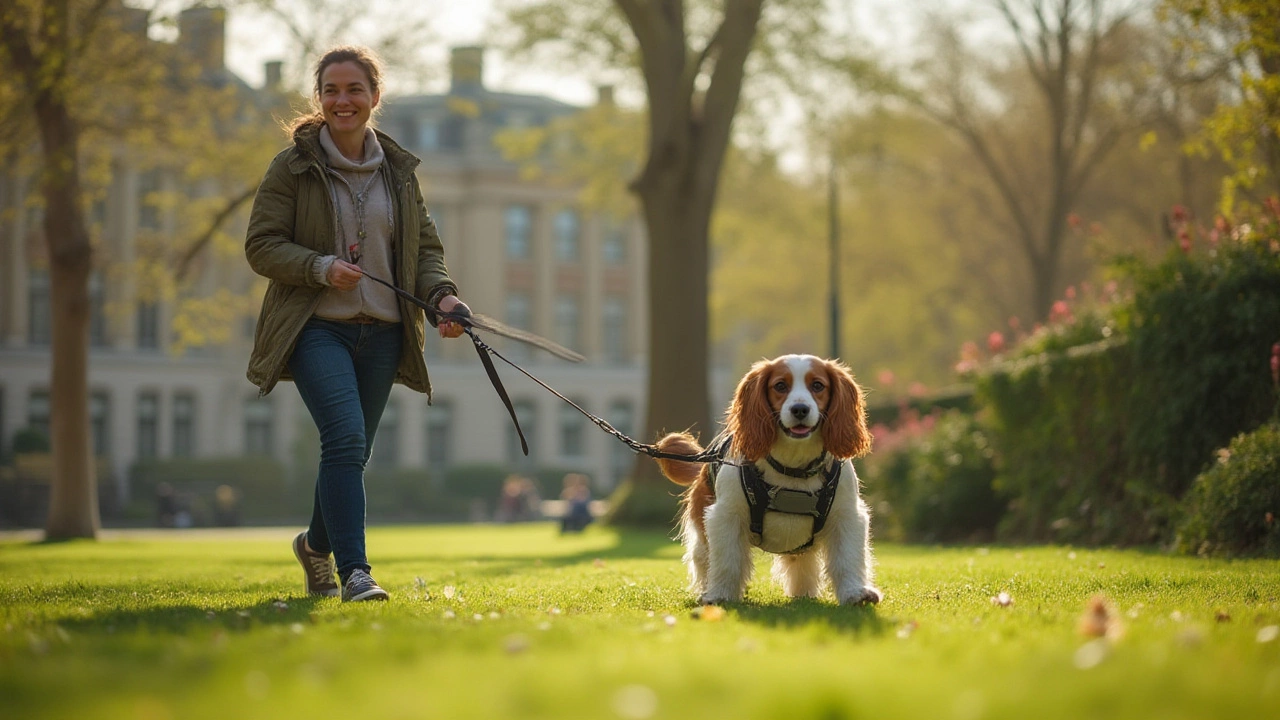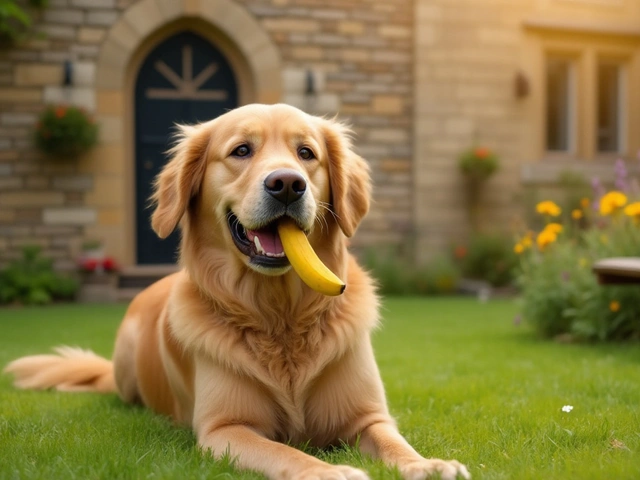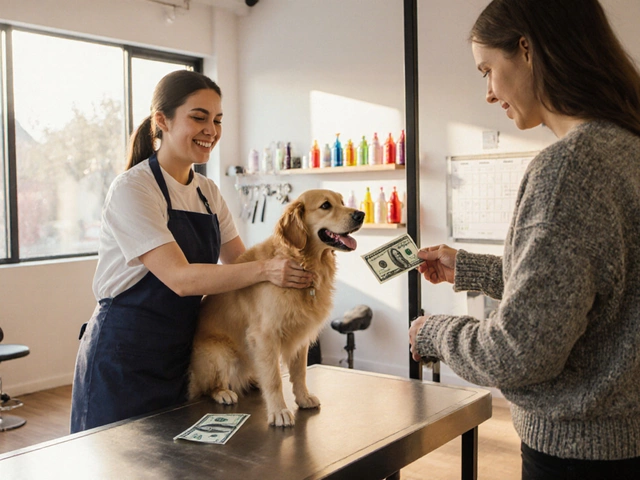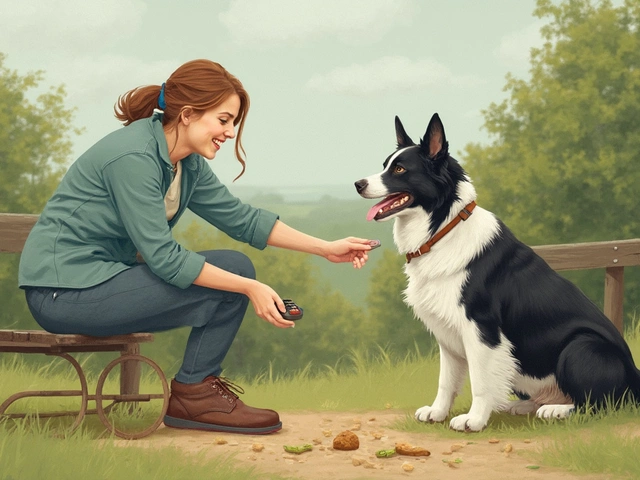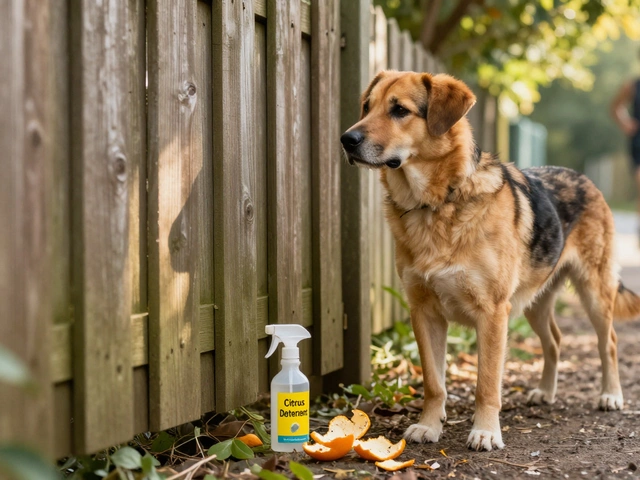Ask any dog parent about their least favorite part of walking their pooch, and you'll probably hear stories about aching arms, tangled leads, and a dog blissfully oblivious to the word "no." If you feel like you’re flying a very excitable, furry kite every time you head out with your pup, you’re in good company. Walks should be fun, not a battle of wills that leaves you gritting your teeth and checking your shoulder for damage. And here’s a shocker: the best tool to stop a dog from pulling is never just about the tool—it’s about matching the right gear to your dog, your needs, and your walking style.
Some dogs pull like they have sled dog DNA, while others just want to sniff every single blade of grass. I’ve had more than one leash nearly slip from my hand as Elsie spotted a pigeon or—worse—a McDonald’s wrapper. Auckland’s parks are basically full of distractions. But there’s hope. There’s science, there’s gear, and there are real-world tricks that actually work beyond the perfect calm you see in those obedience YouTube videos.
No-Pull Solutions That Actually Work
If you Google “stop dog pulling”, you’ll get hit with ads for miracle collars and leashes that promise instant change. The truth is, there’s no single magic gadget, but some tools have serious science behind them. Let’s break down what you need to know—so you don’t waste money or end up with gear that makes everything worse.
- No-pull harnesses—not all are created equal. The ones that work best have a chest clip, right at the front, so when your dog lunges, they get gently turned toward you. No choking, less pulling. Studies from the University of Bristol (2020) found dogs using front-clip harnesses cut their pulling by up to 70% compared to back-clip or standard collars.
- Head halters (like Halti or Gentle Leader)—these look a bit like horse bridles and work by controlling the head, which controls the body. When your dog pulls, their head turns toward you, so it’s harder to drag you along. Dogs might take several days to get used to this feeling.
- Martingale collars—designed mostly for dogs with slender heads (greyhounds, whippets), these tighten a bit if your dog pulls, but not enough to choke. They're safer than choke chains, which vets really don’t recommend anymore.
- Standard collars or retractable leashes—these actually encourage pulling in most dogs, believe it or not. Retractable leashes teach your dog that pulling gives them more freedom. They’re the worst choice for dogs learning "please don’t drag me into the bushes."
Here’s a quick table showing how different tools compare based on what real trainers, vets, and hefty-pulling dog owners report:
| Tool | Effectiveness | Dog Comfort | Ease of Use | Best For |
|---|---|---|---|---|
| No-pull Harness (Front-clip) | High—up to 70% less pulling | High | Easy | Most dog sizes/types |
| Head Halter | High, but some dogs resist | Moderate, takes time to adjust | Moderate | Strong pullers, reactive dogs |
| Martingale Collar | Moderate | High for some breeds | Easy | Greyhounds, Whippets |
| Standard Collar | Low, increases pulling | High | Easy | Already trained dogs |
| Retractable Leash | Poor, encourages pulling | High | Easy | Small, well-trained dogs |
If you want the best shot at a peaceful stroll, trainers in Auckland and abroad swear by the chest-clip no-pull harness. No, it won’t train your dog for you, but it gives you way more power, and it’s actually comfortable for the dog. Elsie’s was $48 at a local pet shop, and it changed our walks overnight. Head halters work wonders for some stubborn pullers, but you need to pair them with slow introduction and lots of treats any time you clip one on. Dogs look a bit like reindeer, though, so be ready for some funny looks at the park.
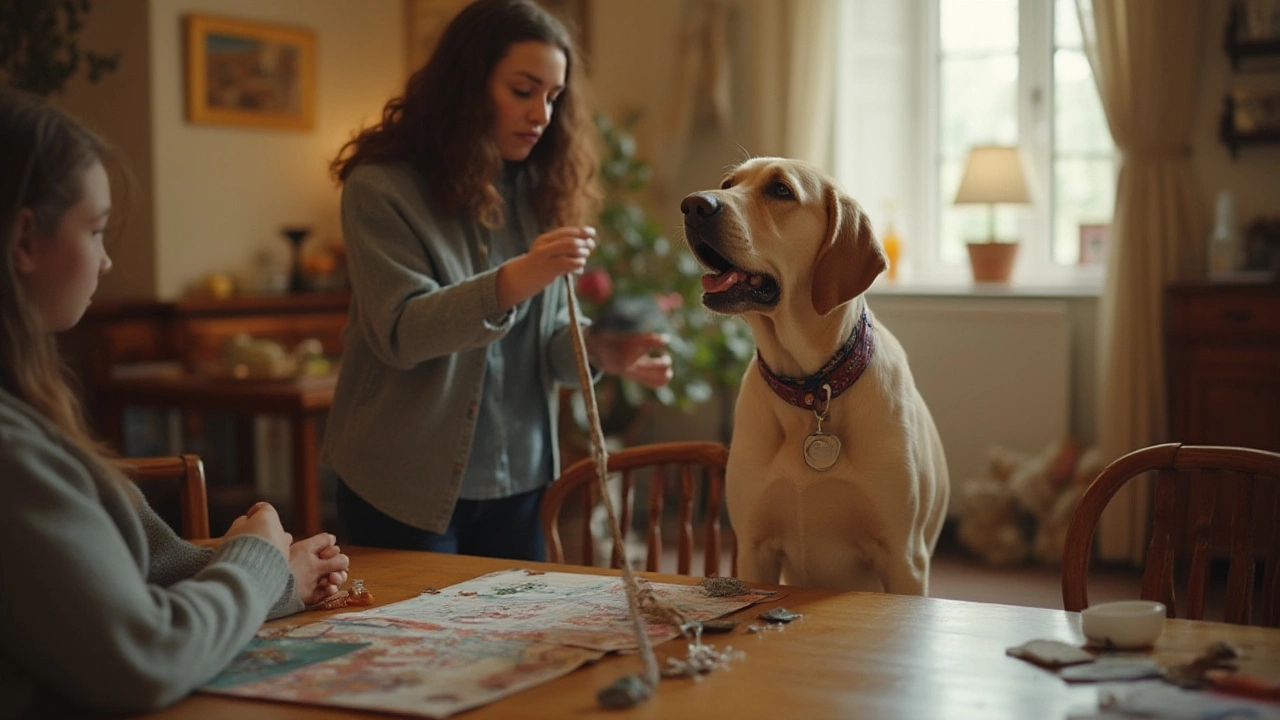
Why Dogs Pull (And How to Make Walks a Breeze)
Now, about that pulling. Dogs don’t do it to annoy you. They’re curious. They want to go fast. They sniff, they chase—walking politely just isn’t natural for them. Tugging on the leash is almost automatic, especially if you’re walking somewhere exciting or there’s another dog ahead. It’s not just hyperactive breeds either. Even the calmest pup will pull if they think it gets them something awesome.
The tech helps, but fixing pulling long-term means getting inside your dog’s furry head. You want your buddy to realize that sticking close—rather than racing ahead—means the walk gets even better. Here’s what works for regular people, not just professional trainers:
- Reward your dog when the leash is loose. This is the golden rule. Any time you feel that leash go slack, even for a second, give a treat or lots of praise.
- Try the stop/start method. When your dog pulls, stop dead. The second they back off, start walking again. It takes patience, but dogs catch on surprisingly fast.
- Change your pace or direction. Suddenly turn around or zig-zag. Your dog will pay more attention to you (and maybe stop guessing where the fun is).
- Keep training sessions short and sweet. Five to 10 minutes of right behavior is better than forty minutes of frustration for both of you.
In a 2021 study by Auckland University, dogs trained using positive reinforcement and a no-pull harness improved loose leash walking twice as fast as dogs using standard collars. So, those treats in your pocket? They’re not just for bribery—they’re part of the magic.
Kids can help too, but always supervise if you’ve got a heavy puller. Elsie, my daughter, sometimes holds a second leash with our older Labrador—she loves being part of the adventure and learning about respect, patience, and how to reward with her voice instead of just snacks. If you’ve got young ones, let them practice in the backyard first, so they don’t end up accidentally water-skiing down the footpath.
If your dog is pulling super hard, it’s smart to check with the vet. Sometimes, pain, anxiety, or even poor eyesight can make a dog act up on walks. You want to rule out health issues before blaming bad behavior.
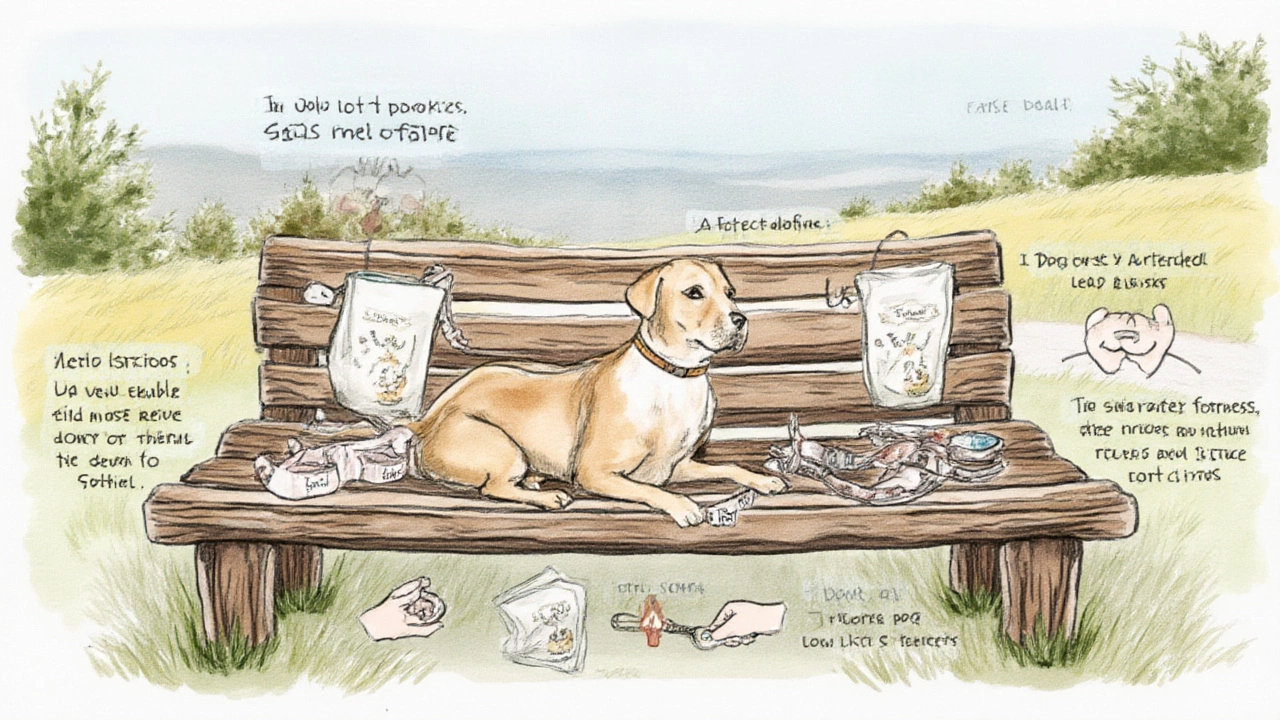
How to Pick (and Use) the Right Tool for Your Dog
Picking gear can feel overwhelming. Step into any pet store and you’re faced with racks of harnesses in every color and style. Don’t fall for the fanciest label. What matters is how it fits and works for your specific pooch. Try the gear on in-store if you can—the best harness is useless if your dog can wriggle out of it, or if it rubs their skin raw after ten steps.
- For small breeds, look for lightweight, padded harnesses. Some gear is too bulky and will annoy a little dog, making walking even less fun.
- Giant breeds need sturdy, adjustable harnesses made from strong webbing. Check buckles and seams for durability.
- Short-nosed breeds (like Frenchies and Bulldogs) do better in harnesses rather than collars, since pulling can make them snort and choke. Always avoid any collar that tightens around the throat.
Watch for body language. If your dog cowers, freezes, or constantly scratches at the gear, it might be the wrong fit. Helpful staff at good pet shops usually let you bring your dog in for a fitting. If your first harness doesn’t work, try a different style. Getting the right fit can mean the difference between a pleasant walk and a circus act.
The real trick? Once you have your tool—a front-clip harness or head halter—pair it with simple, clear cues each walk. Consistency is your best friend. Choose a cue word, like "easy," every time your dog walks politely. Use the same gear every walk until your dog gets it. If things slip back, resist the urge to swap gadgets constantly. Stick with your harness, keep training, and remember: even the most stubborn pulldog can learn.
Outside the city, hikes, or off-leash areas, always keep your harness handy. You never know when you’ll need to clip back in if there’s a rabbit or cyclist nearby. And if your dog loves carrying things, some harnesses come with little pouches for waste bags or treats—which is honestly a lifesaver when you forget your pockets.
The best tool to stop a dog from pulling isn’t just a harness or a head halter. It’s pairing the right gear with steady, kind, proven training—and not falling for the myth that only experts can train a polite walker. Dedication, good gear, and a pocketful of treats will get you there. Suddenly, “walkies” means a happy outing for both of you, not an accidental arm workout. And for anyone wondering: yes, it actually is possible to text, talk, wrangle kids, and walk your dog—if you’ve got the right tool and routine in place.
